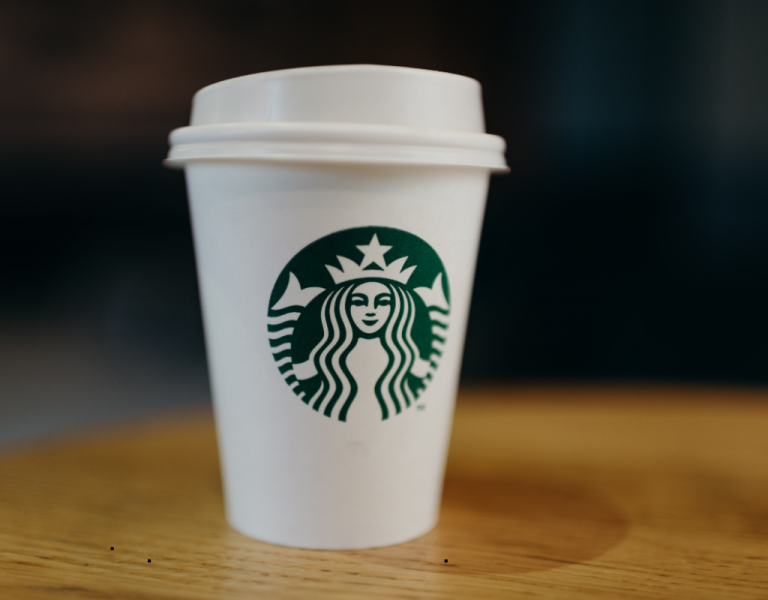
Starbucks, the world’s largest coffee chain, has suffered a significant drop in its market capitalization after reporting disappointing quarterly results. The company revealed that its global comparable store sales fell by 9% in the fourth quarter of 2023, missing analysts’ expectations of a 5% decline. The company also lowered its guidance for the fiscal year 2024, citing ongoing challenges from the COVID-19 pandemic, supply chain disruptions, labor shortages and rising costs.
The market reacted negatively to the news, sending Starbucks shares down by more than 15% on Thursday, wiping out about $11 billion from its value. The stock closed at $78.32, its lowest level since March 2020. Starbucks now has a market cap of about $92 billion, down from $103 billion at the end of the previous quarter.
Starbucks CEO Kevin Johnson said that the company faced “unprecedented headwinds” in the quarter but remained confident in its long-term growth strategy. He said that Starbucks was investing in digital innovation, menu expansion, sustainability and social impact initiatives to enhance its customer experience and loyalty. He also said that the company was working to improve its operational efficiency and profitability by optimizing its store portfolio, streamlining its supply chain and managing its expenses.
Register for Tekedia Mini-MBA edition 19 (Feb 9 – May 2, 2026): big discounts for early bird.
Tekedia AI in Business Masterclass opens registrations.
Join Tekedia Capital Syndicate and co-invest in great global startups.
Register for Tekedia AI Lab: From Technical Design to Deployment (next edition begins Jan 24 2026).
One of the main factors that contributed to the sales slump is the ongoing covid-19 pandemic, which has forced many Starbucks stores to close or operate with limited capacity and hours. The company said that it lost $1.2 billion in sales due to the virus outbreak, as customers stayed home or opted for cheaper alternatives. The pandemic also disrupted the supply chain and increased the costs of raw materials, such as coffee beans and milk.
Another reason for the decline is the growing competition from other coffee chains and independent cafes, especially in China, which is Starbucks’ second-largest market. The company faces fierce rivalry from local brands, such as Luckin Coffee and HeyTea, which offer lower prices, faster delivery and more variety.
Starbucks also faces challenges from social and environmental issues, such as the backlash against its plastic cups and straws, the allegations of racial discrimination and labor exploitation, and the boycotts from some customers who disagree with its political stance.
To cope with these difficulties, Starbucks has announced several measures to boost its sales and regain its customers’ loyalty. The company plans to accelerate its digital transformation, by expanding its mobile ordering, delivery and loyalty programs.
It also aims to innovate its menu, by introducing more plant-based and seasonal products, such as oat milk lattes and pumpkin spice drinks. Moreover, the company intends to improve its social responsibility, by reducing its environmental impact, increasing its diversity and inclusion efforts, and supporting its employees and communities.
However, these strategies may not be enough to overcome the challenges that Starbucks faces in the post-pandemic era. The company will have to adapt to the changing consumer preferences and behaviors, such as the demand for convenience, quality and value.
It will also have to deal with the uncertainty and volatility of the global economy and the coffee market. And most importantly, it will have to restore its brand image and reputation, which have been tarnished by the recent scandals and controversies.
Starbucks is not the only company that has suffered from the covid-19 crisis, but it is one of the most affected ones due to its reliance on physical stores and premium prices. The company has a long history of innovation and resilience, but it will need more than that to survive and thrive in the new normal. Will Starbucks be able to turn around its fortunes and reclaim its position as the world’s leading coffee chain? Only time will tell.
However, some analysts and investors are skeptical about Starbucks’ ability to overcome the current challenges and maintain its competitive edge in the crowded coffee market. They point out that Starbucks is facing increased competition from rivals such as Dunkin’ Donuts, McDonald’s and Peet’s Coffee, as well as from independent coffee shops and specialty roasters. They also note that Starbucks is losing market share in some of its key regions, such as China and Europe, where local preferences and tastes are different from those in the US.
Starbucks has been one of the most successful and iconic brands in the history of the coffee industry, but it seems that it is facing a moment of reckoning. The company will have to prove that it can adapt to the changing consumer behavior and preferences, as well as to the uncertain and volatile business environment. Otherwise, it may risk losing its relevance and appeal among its loyal customers and shareholders.



